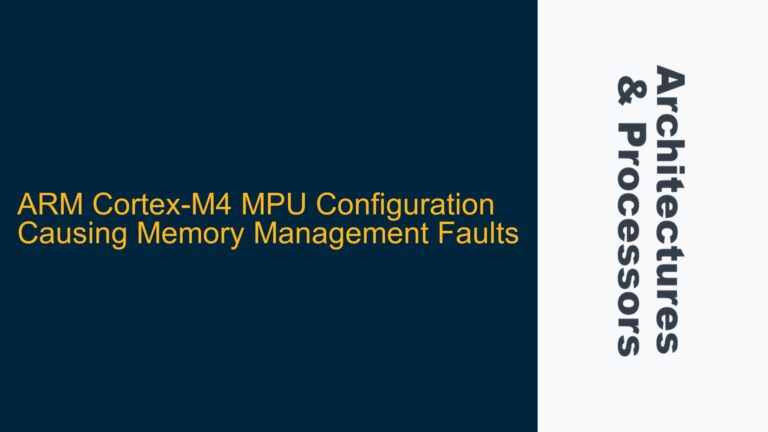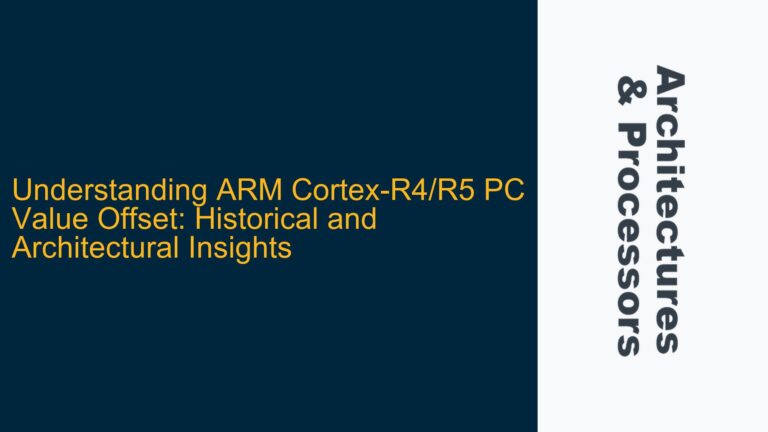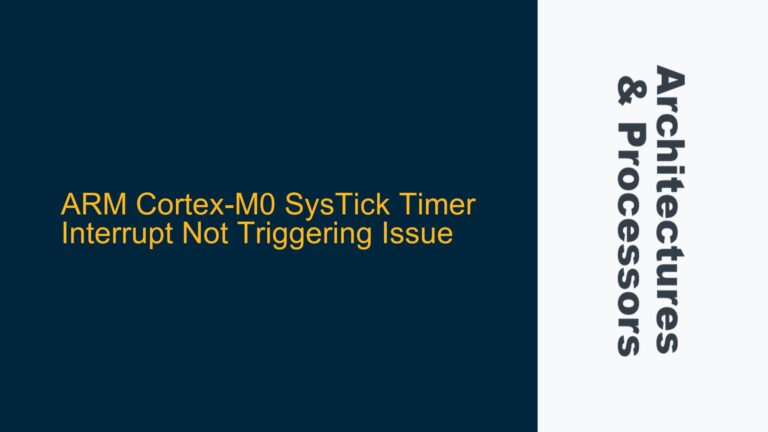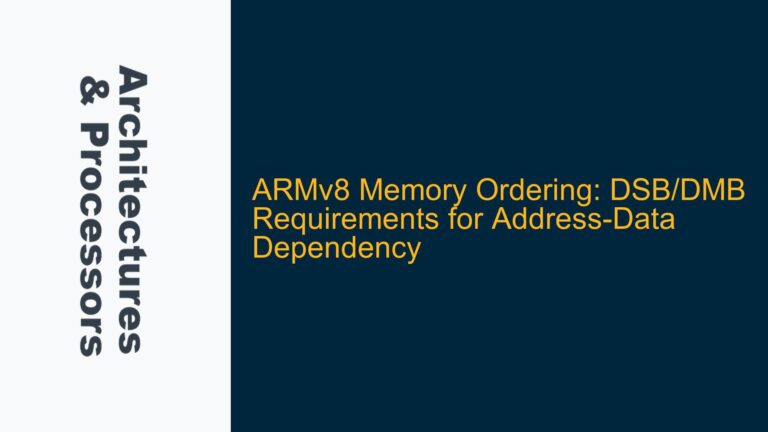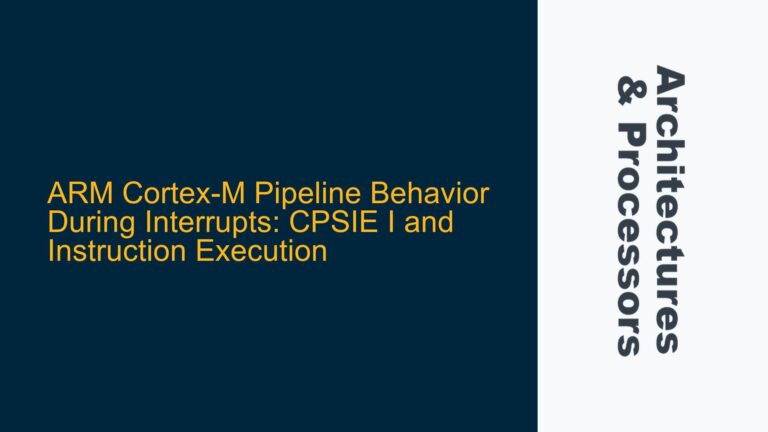ARM Cortex-R4 Instruction Pre-Fetch Unit (PFU) and Flash Diagnostics Conflict
The ARM Cortex-R4 processor, like many modern embedded processors, employs an Instruction Pre-Fetch Unit (PFU) to improve performance by fetching instructions ahead of their execution. This mechanism is critical for maintaining the pipeline’s efficiency, ensuring that the processor has a steady stream of instructions to execute without stalling. However, this feature can introduce complications in specific scenarios, particularly when performing diagnostic tests on flash memory. The core issue arises when the diagnostic routine, executed from RAM, inadvertently triggers the PFU to pre-fetch instructions from flash memory, even though the flash is supposed to remain idle during the test. This behavior can corrupt diagnostic results or interfere with the test’s integrity.
The PFU operates independently of the processor’s execution unit, fetching instructions based on the program counter’s predicted path. When the diagnostic routine is about to complete and return control to flash memory, the PFU may already have started pre-fetching instructions from the flash region. This pre-fetching occurs because the PFU anticipates the return to flash execution and attempts to minimize pipeline stalls by filling its FIFO buffer with instructions from the flash memory. This behavior is problematic because flash diagnostics require the flash memory to be entirely idle during the test to ensure accurate results.
The System Control Register (SCTLR) bit 12, which controls instruction caching, does not directly disable the PFU. Disabling instruction caching only prevents instructions from being cached at any level, but the PFU can still fetch instructions directly from flash memory or Tightly Coupled Memory (TCM). This distinction is critical because the PFU’s operation is not solely dependent on caching mechanisms. Instead, it relies on the memory interface to fetch instructions, regardless of whether caching is enabled or disabled.
The challenge, therefore, is to ensure that the PFU does not access flash memory during the diagnostic routine’s execution. This requires a deeper understanding of the Cortex-R4’s memory system, the PFU’s behavior, and the available mechanisms to control memory access permissions. The solution must balance the need to maintain pipeline efficiency while ensuring that flash memory remains idle during diagnostics.
Memory Access Permissions and PFU Behavior in Cortex-R4
The Cortex-R4’s Memory Protection Unit (MPU) provides a mechanism to control memory access permissions, which can be leveraged to prevent the PFU from accessing flash memory during diagnostics. The MPU allows the system to define regions of memory with specific access permissions, such as read, write, and execute. By marking the flash memory region as non-executable during the diagnostic routine, the processor will not attempt to fetch instructions from that region, effectively preventing the PFU from accessing flash memory.
However, this approach requires careful consideration of the MPU’s configuration and its interaction with the PFU. The MPU operates at a higher level of abstraction than the PFU, meaning that changes to memory access permissions are enforced by the memory system rather than the PFU itself. When the flash memory region is marked as non-executable, any attempt by the PFU to fetch instructions from that region will result in a memory access fault. This behavior ensures that the flash memory remains idle during diagnostics but introduces the risk of triggering unintended faults if the MPU configuration is not handled correctly.
Another factor to consider is the timing of MPU reconfiguration. The diagnostic routine must ensure that the flash memory region is marked as non-executable before the PFU begins pre-fetching instructions from that region. This requires precise synchronization between the diagnostic routine and the MPU configuration. If the MPU is reconfigured too late, the PFU may have already started pre-fetching instructions from flash memory, defeating the purpose of the reconfiguration.
Additionally, the Cortex-R4’s pipeline architecture introduces further complexity. The PFU’s pre-fetching behavior is influenced by the pipeline’s state, including branch prediction and speculative execution. Even if the MPU is reconfigured correctly, speculative execution may cause the PFU to pre-fetch instructions from flash memory before the reconfiguration takes effect. This behavior underscores the importance of understanding the interplay between the MPU, PFU, and pipeline architecture when designing solutions to control instruction pre-fetching.
Implementing MPU-Based Flash Access Control and Instruction Padding
To address the issue of unwanted flash memory access during diagnostics, a combination of MPU-based access control and instruction padding can be employed. The MPU is used to mark the flash memory region as non-executable during the diagnostic routine, preventing the PFU from fetching instructions from that region. This approach ensures that the flash memory remains idle during the test, as required by the diagnostic procedure.
The first step in implementing this solution is to configure the MPU to define the flash memory region as non-executable. This configuration should be applied before starting the diagnostic routine to ensure that the PFU does not pre-fetch instructions from flash memory. The MPU configuration can be achieved by modifying the region attributes in the MPU’s control registers. For example, the region’s access permissions can be set to "no access" or "read-only," depending on the specific requirements of the diagnostic test.
Once the MPU is configured, the diagnostic routine can be executed from RAM. During this phase, the PFU will only fetch instructions from the RAM region, as the flash memory region is marked as non-executable. This ensures that the flash memory remains idle, allowing the diagnostic test to proceed without interference.
After the diagnostic routine completes, the MPU configuration must be restored to re-enable execution from flash memory. This step is critical to ensure that the processor can resume normal operation after the test. The MPU reconfiguration should be performed immediately after the diagnostic routine completes, before any instructions are fetched from flash memory. This timing is essential to prevent the PFU from pre-fetching instructions from flash memory during the transition back to normal operation.
In addition to MPU-based access control, instruction padding can be used to mitigate the risk of unwanted flash memory access. The diagnostic routine can be padded with NOP (No Operation) instructions at the end to ensure that the PFU’s FIFO buffer is filled with NOPs rather than instructions from flash memory. This approach provides an additional layer of protection against unwanted flash memory access, particularly in cases where the MPU reconfiguration timing is not precise.
The number of NOP instructions required depends on the depth of the PFU’s FIFO buffer. For the Cortex-R4, this depth is typically a few instructions, so padding the diagnostic routine with a small number of NOPs is sufficient to ensure that the PFU does not pre-fetch instructions from flash memory. This technique is particularly useful in scenarios where precise MPU reconfiguration timing is difficult to achieve.
Finally, it is essential to disable interrupts during the diagnostic routine to prevent context switches that could interfere with the MPU configuration or instruction padding. Interrupts can cause the processor to switch to a different execution context, potentially disrupting the diagnostic test and leading to unintended flash memory access. Disabling interrupts ensures that the diagnostic routine executes uninterrupted, maintaining the integrity of the test.
By combining MPU-based access control, instruction padding, and interrupt management, the issue of unwanted flash memory access during diagnostics can be effectively addressed. This approach leverages the Cortex-R4’s architectural features to ensure that the flash memory remains idle during the test, enabling accurate and reliable diagnostic results.

